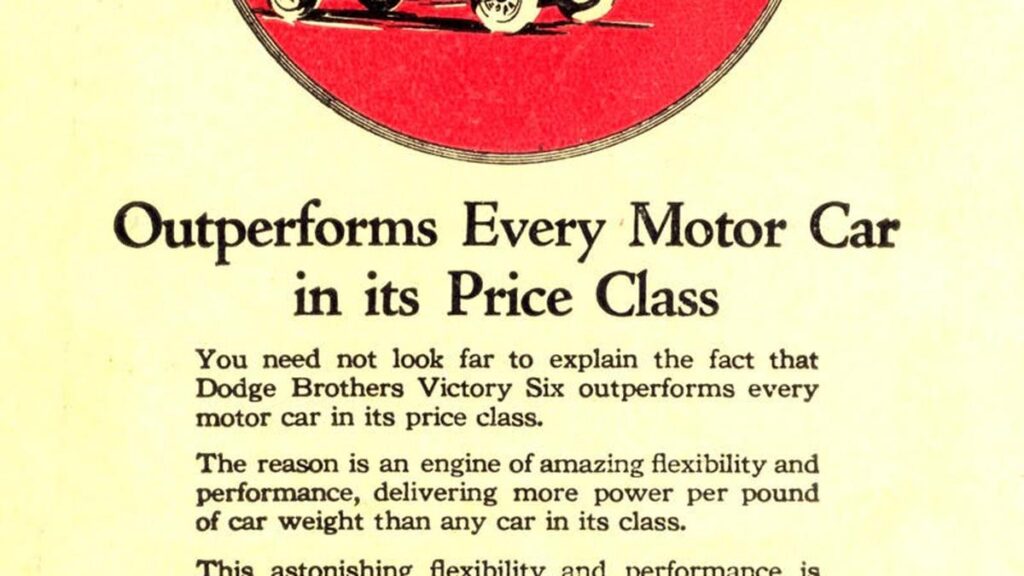
Aggressive marketing: An ad for Dodge Brothers Victory Six car.
| Photo Credit: special arrangement
Last week witnessed a vintage car rally organised by the Historical Cars Association of India (HCAI). Among those who showcased their cars was Ranjit Pratap, president of the HCAI. His interest in automobiles is inherited from his grandfather M. Rajagopal Naidu, who from humble origins went on to found Rajagopal Motor Works on Mount Road and then ran a clutch of bus routes and cinema theatres before moving on to typewriters. He was the founder of Halda, still remembered in name at a busy intersection near Guindy. It was a Swedish collaboration that made typewriters from a factory located where the Ashok Leyland building now stands.
Rane enters the city
Rajagopal Naidu would have also got into automobile components manufacture but death intervened and his licence for making engine valves was acquired by LL Narayanan of Rane Madras and the latter group transitioned from automobile trading to component manufacture, an area in which it continues to flourish.
Invited to speak at the HCAI event, I racked my brains on what new to present on Madras’ long journey as an auto hub. I then zeroed in on Rajagopal Naidu’s fascination for American cars. He never dealt with British models as his way of registering his disapproval of the Raj. That led me to ponder over how Americans managed to create a presence for themselves in India and Madras in particular in colonial times. After all, the British would have wanted only cars from Coventry and other such automobile hubs in the U.K. to be sold here.
Consular reports
Scattered online is a whole collection of special consular reports dating to the early 1900s on doing business in India. These were compiled by the local consuls for the Department of Commerce and Labor of the United States of America.
In Madras, the consul between 1911 and 1914 was a Jose de Olivares and his writings are fascinating, for they deal with everything from motor cars to musical instruments and their business potential in the city and the Presidency. From him, we learn that there was strong resistance initially to American cars in the city, chiefly owing to tales spread about them by European vehicle dealers.
A campaign involving personal canvassing of large dealers and more importantly, office-bearers of what Olivares terms the leading automobile club of South India (no doubt the Southern India Motor Union) was taken up. The first breakthrough came about when the Madras Government ordered ten automobiles for use in the Imperial Coronation Durbar held in Delhi in 1911. Encouraged by that, Jose de Olivares opined that if “the vigorous, aggressive methods followed by American dealers were introduced here, business would be materially increased.” The city then had 450 cars registered.
‘Phenomenal results’
Jose went from here to Ontario in 1914 but even in 1913 he had the satisfaction of noting that “phenomenal” results were being achieved. Of the 304 cars of all makes imported into Madras in 1913, 104 were American. The First World War brought further cheer to the American car manufacturers, for the local trade consul wrote that the German market share in Madras could be turned to American advantage. And then in 1923 came a special report, American Automotive Products in India, by Trade Commissioner CC Batchelder. By then, U.S. cars were second to British, when it came to Indian imports. The American rejoiced at ‘swaraj’, for it would mean a boycott of British goods — so says the document.
And that is where Rajagopal Naidu and others came in. Now, of course, for those who love these old cars, more than the flashy, snazzy modern cars, there are always vintage shows to visit.
(V. Sriram is a writer and historian.)
Published – February 11, 2025 11:00 pm IST
Source:https://www.thehindu.com/news/cities/chennai/how-americans-created-space-for-their-automobiles-in-madras/article69202398.ece

